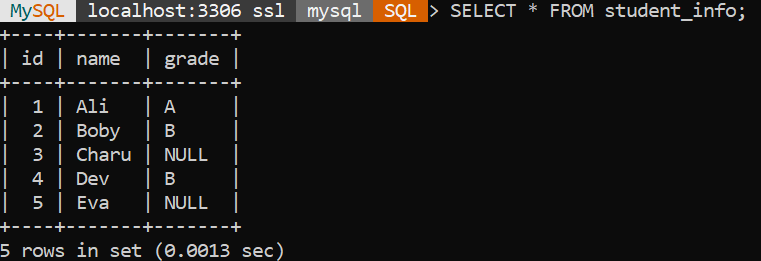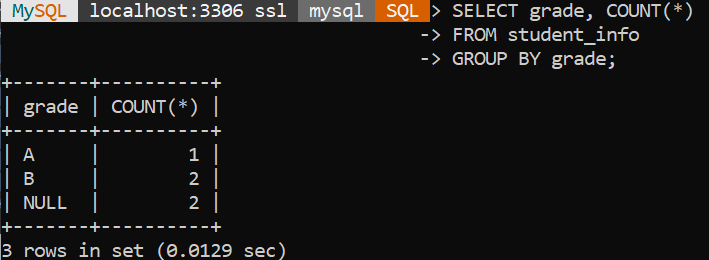If you have been writing SQL queries for longer, you must know the significance of GROUP BY and NULL values and how they contribute the most while managing and manipulating data values. NULL values represent the absence of a value or an unknown value in a database column, while the GROUP BY clause is used to group rows that contain the same value into summary rows. In this tutorial, we will learn the behaviour of NULL value with GROUP BY clause.
Understanding NULL Values
Consider yourself as a department head, and you have a list of students, some of whose grades are still unknown to you. NULL value acts here as saying “I don’t know” or “There’s nothing there” in the database world. It’s a method of illustrating the lack of or uncertain information.
It is important to understand that NULL is not synonymous with zero or an empty string. Furthermore, it signifies a missing or undefined value.
Null Values with Group By Clause
When you are grouping items together, such as students based on grades, you may be wondering what happens to students who do not yet have a grade.
Depending on the database system, NULL values are handled differently when using the GROUP BY clause in SQL queries. While NULL values are handled as separate entities in some databases, they are pooled together in others.
It is important to understand the behaviour of NULL values in conjunction with the GROUP BY clause for precise data analysis and decision-making.
Also Read: Handle NULL When Working with ORDER BY Clause in SQL
Examples to Understand the Behavior of NULL Values with GROUP BY
Let’s consider some simple examples to understand the behaviour of NULL values with the GROUP BY clause. Suppose we have a table named “student_info”:

Example 1:
Now let’s see how the GROUP BY clause and NULL values work together:
SELECT grade
FROM student_info
GROUP BY grade;Code language: SQL (Structured Query Language) (sql)
From the above, we can see that the third result value is NULL. This represents that GROUP BY considers NULL entries to be valid.
Example 2:
Let’s say we want to group students by their grades, and also we want to count the number of students scoring grade, including NULL grade.
SELECT grade, COUNT(*)
FROM student_info
GROUP BY grade;Code language: SQL (Structured Query Language) (sql)
The NULL values are clustered together, as we can see from the image above, and two students have NULL grades.
But in terms of grouping or sorting data, SQL sees two values as equal if they are the same or both NULL, i.e., they are recognized as “not distinct” under its standards.
Example 3:
Now, we are going to use the COALESCE function to replace NULL values with the string ‘Unknown’ before grouping the data.
SELECT COALESCE(grade, 'Unknown') AS grade, COUNT(*)
FROM student_info
GROUP BY COALESCE(grade, 'Unknown');Code language: SQL (Structured Query Language) (sql)
In the above example, as you can see the NULL values are treated as ‘Unknown’ and grouped accordingly.
Why Is It Important?
So, you must be wondering why is it important to understand how NULL values and GROUP BY clause work together. Here’s why:
- Getting the Full Picture: NULL values frequently indicate that our data has missing information. We can check how many NULLs we have in each category when we use the GROUP BY clause to group our data. This helps us understand if there are any missing pieces in our data puzzle.
- Making Sure Reports Are Complete: Sometimes, our data has NULL values scattered around. If we’re making reports or summaries, we need to count those NULLs too. The GROUP BY clause helps us group data together, including those pesky NULLs, so our reports are accurate and complete.
- Making Better Decisions: When we understand how NULLs and the GROUP BY clause work, we can trust our data more. This means the decisions we make based on that data are likely to be better, too.
Conclusion
It is important to understand how to handle NULL values with the GROUP BY clause in SQL because that helps in gaining a clear picture of our data, making accurate reports, spotting any data issues, summing up our data accurately and ultimately better decision-making. In this tutorial, we have covered each scenario with the help of examples. We hope you enjoyed it.
Reference
https://stackoverflow.com/questions/56544563/check-for-all-nulls-within-a-group
